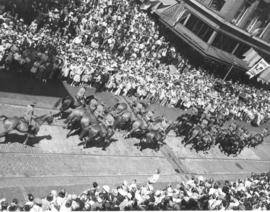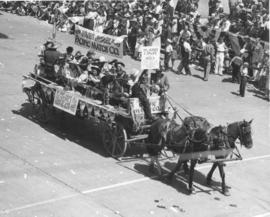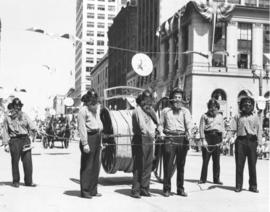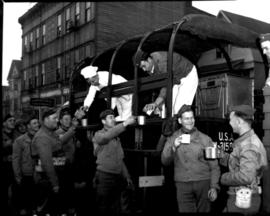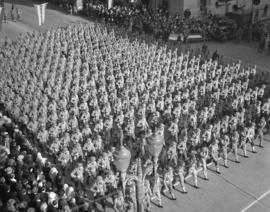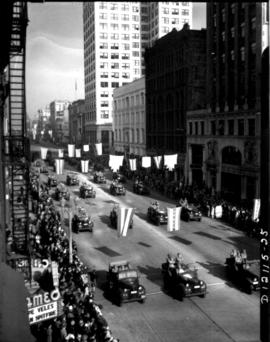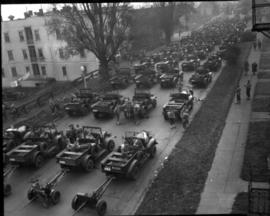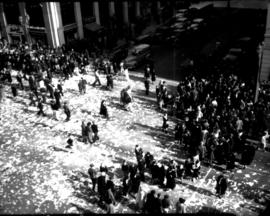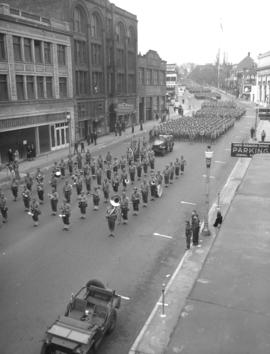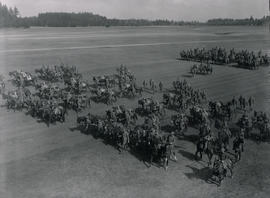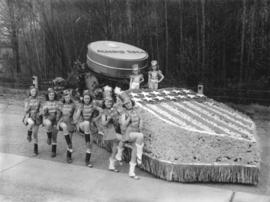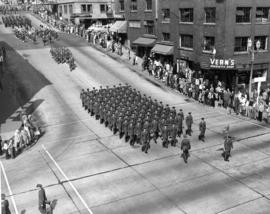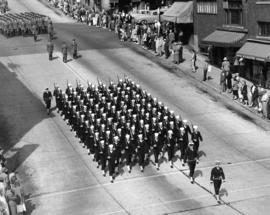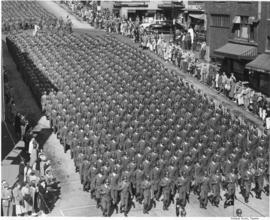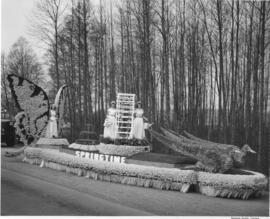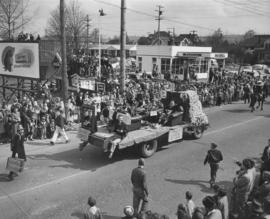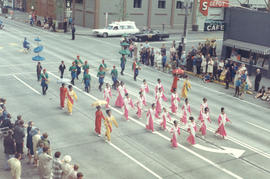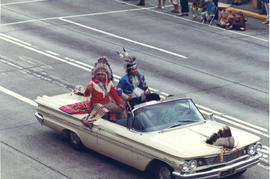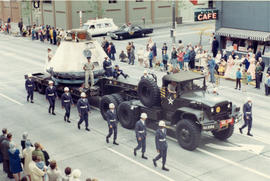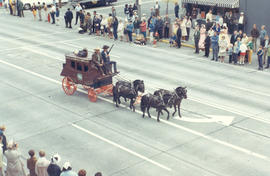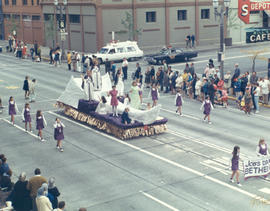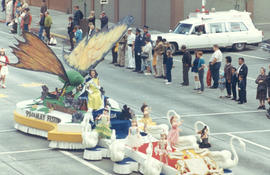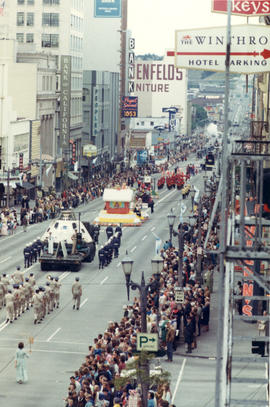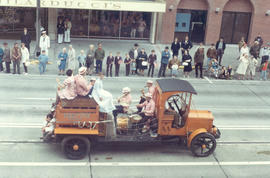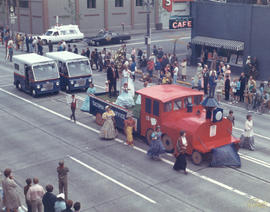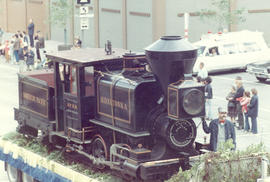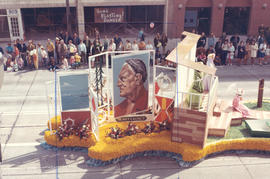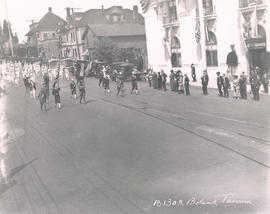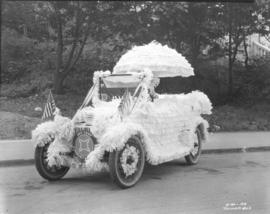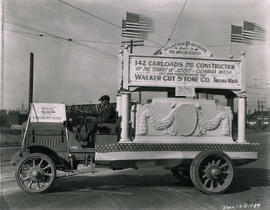At 10 a.m. on a clear July 4th morning in 1919, the most elaborate Independence Day parade in years got underway. Thousands watched the 45 minute spectacle, part of the Northwest Peace Jubilee celebration. In the fourth division, industrial, was this pictured float entered by the Walker Cut Stone Co. of Tacoma. A General Motors 5 ton chassis carried a 6 1/2 block of carved Wilkeson Sandstone. The stone was elaborately carved and designed for the "Temple of Justice" in Olympia, Wa. The float banner stated that 142 carloads were used in the construction of the Temple, at Cherry Lane and 12th Ave. in Olympia, which houses the State Supreme Court. The structure was completed in 1920. The GMC truck was loaned by Mueller-Harkins Motor Co. to Bob Walker, at the wheel of the vehicle. Wilkeson Sandstone is named for the small mountain town of Wilkeson, in the Cascade range, where it is quarried. The 1919 City Directory lists A.J. Griesemer as President, Robert Walker as Sec-treas., and 1008 Puyallup Ave as the location of the office and yard of Walker Cut Stone. (TDL 7/5/1919, pg. 1; TDL 7/13/1919, pg. 6C- picture) G33.1-114, TPL-2244
Parades & processions--Tacoma--1910-1920; Floats (Parades)--Tacoma--1910-1920; Walker Cut Stone Co. (Tacoma); Holidays--Tacoma--1910-1920; General Motors trucks;
